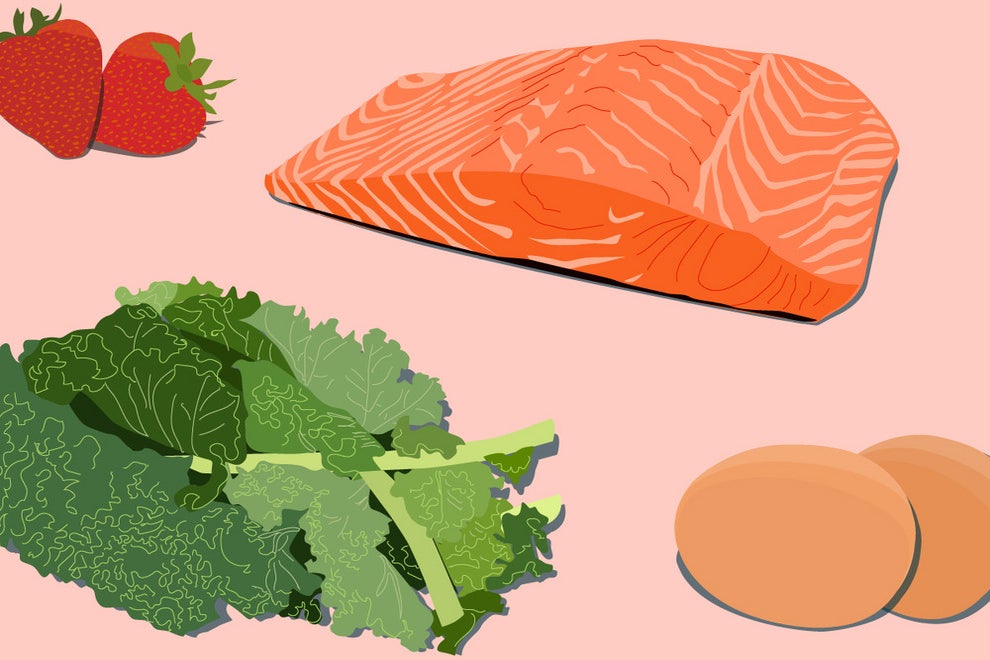How to Detox to Look and Feel Your Very Best
And no, that doesn’t mean starving yourself.
Updated Apr 19, 2019 3:37 PM
We may earn revenue from the products available on this page and participate in affiliate programs.
If you’ve ever felt stuffed after a big Thanksgiving meal or just a long, extended vacation, you’ve probably thought to yourself, “I need to detox.” While that term gets thrown around pretty often, the catalyst is usually from feeling bloated or uncomfortable in your skin—like something isn’t quite right. But do you know what a detox really is? Many people don’t, which is why we created this ‘How to Detox’ guide, making it as simple as possible to feel your best.
First, what happens to your body when you detox? According to Natasha Uspensky, a Los Angeles-based holistic health counselor, detoxing is about removing toxins from your liver that might have accumulated due to weather, pollution, stress, or inflammatory foods. It doesn’t have to be the extremes you might often associate with detoxing though, it can be a gentle way to reset your body.
“Although our bodies generally do a good job of clearing out toxins, we can always use a little extra support, especially at key times of the year,” she explains. “Spring is the most important time of the year to detoxify the body, as it aids in transitioning from the fat storage mode of winter to the fat burning time of spring and summer.” Here’s everything you need to know to cleanse and reset in 2019.
Detox Benefits
So, why detox in the first place? According to Uspensky, removing excess toxins from your body can help you break food addictions, lose weight, get way more energy, and have clearer, brighter skin.
“I feel lighter, clearer-headed, more energized, with better digestion and healthier skin, as do my clients,” she explains. But she cautions against overdoing it, as a detox will not fix all your problems.
“Intention is important,” says Uspensky. “If you’re using detoxes to counteract regular unhealthy food choices and patterns, there is a larger issue that a detox will not fix. A detox is a great way to transition between seasons or jumpstart a new, healthier diet or lifestyle, but shouldn’t be used to ‘erase’ bad decisions.”
Detox Symptoms
While the connotation is generally that a detox will leave you lightheaded and weak, Uspensky insists that sticking to the right type of detox won’t result in those kinds of symptoms.
However, she explains, “With any true detoxification process, you will likely experience some short-term symptoms, especially if you are breaking an addiction to sugar, coffee, or junk food. A day or two of crankiness, or even a headache, are normal detox symptoms that go away as the body adjusts to a cleaner diet. As long as you are actually providing your body with enough nutrients, protein, and some fat, the detox symptoms should be pretty minimal.”
How to Detox
While there are several different options when it comes to cleansing, Uspensky believes that certain guidelines work well for everyone—albeit with some customization.
“I’m a big fan of a whole food cleanse,” says Uspensky. “Cutting out processed, toxic, hard-to-digest foods really allows the body to reset, take a break, and speed up the detoxification process.” The foods you should be focusing on include organic, fresh produce, wild-caught fish (should you eat it), gluten-free grains like quinoa and buckwheat, and healthy fats like avocados, nuts, seeds, and olive oil. While there are several prepared meal options out there (our editor tried one and wrote about her experience), Uspensky’s version is a how-to DIY, vegan detox guide, which makes it simple by meal prepping in advance.
“I usually do a cleanse once a year,” explains Uspensky. “It’s basically a vegan, allergen-free, sugar-free, gluten-free diet with a nutrient-rich green smoothie for breakfast, a big vegan whole food lunch, and a blended vegetable soup for dinner. This milder cleanse can be done for longer (usually about two weeks), and it yields amazing results.”
This isn’t to say you can’t detox for a shorter period of time—in about three days, you start to see results, but it’s generally better to continue for a little longer in order to get your body used to these healthier, unprocessed foods.
What Not to Do
However, Uspensky is quick to point out that this doesn’t mean starving yourself. “One of the biggest mistakes people make [during a detox] is overdoing it,” says Uspensky. “No one needs to go on extreme fasts or juice cleanses every few months. It’s actually quite dangerous and destabilizing to the body to go into a pendulum swing effect of extremes—constantly overdoing unhealthy foods and habits, followed by extreme periods of detox.” Try to follow a how-to or guide to detoxing, versus going about it on your own, she says.
You should also make sure the time of year plays an important role in the types of foods you choose to eat while you detox. Ayurveda emphasizes the importance of avoiding cooling foods in the winter, and this is even more important when your body is undergoing a complete nutrient rehaul.
“The middle of winter is the absolute worst time to do a juice or raw food cleanse,” says Uspensky. “The body has to work overtime to generate enough heat for proper digestion and body warmth, which leaves the person feeling fatigued, cold, and more susceptible to colds and illness.”
And your Ayurvedic type (check out how to find yours here) plays a role, too. “Cold and dry people (vata types in Ayurveda) would never do well with a raw food or juice cleanse—it’s just way too cold for their bodies, which do much better with cooked foods and warmth,” says Uspensky. “But warmer body types (like pitta and kapha in Ayurveda) would feel quite well on a juice or raw cleanse, if done in the right season. Cleansing is all very personal!”
